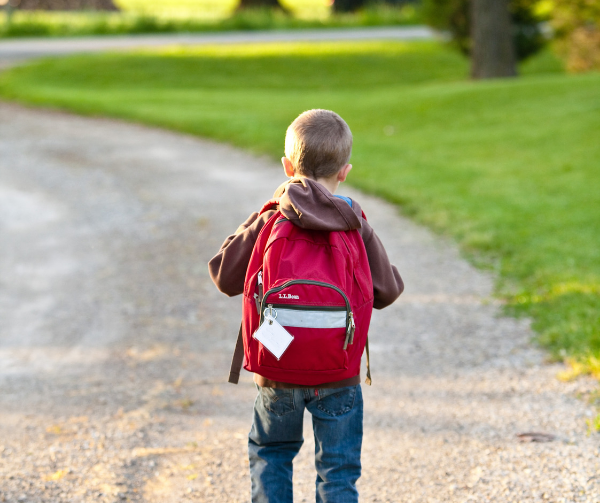How can it already be nearly two weeks into the new school year?! Didn’t school just get out for summer? Wasn’t it just July 4th? Regardless of how the summer months seem to have escaped again this year, the calendar is here to remind me we are smack in the middle of September and almost to the beginning of Fall. While I love all things back to school, pumpkin spice everything, the promise of comfy fall fashions (looking at you oversized knit sweaters), and the crisp mornings, warm afternoons, and cool evenings, mid-September also means thinking about Backpack Awareness Day.

Say what? An entire day dedicated to backpack awareness? Awareness of what, you might ask. Prior to becoming a stay-at-home mom almost two years ago, I worked as an occupational therapist in early childhood and school settings. One of the events that the American Occupational Therapy Association (AOTA) supports and promotes is an annual Backpack Awareness Day on the third Wednesday of September to help educate students, parents, teachers, and administrators about the potential ergonomic hazards of toting around a heavy bag on a regular basis. Over time, carrying heavy and/or ill-fitting backpacks can cause neck and back strain.
Our kids (and teachers!) spend a lot of time carrying their bags to, from, and around school each day. AOTA has developed five helpful hints to assist in ensure a proper fit and safe, routine use of bags:
- How much does it weigh? A fully-packed bag should weigh no more than 10% of the child’s body weight. So if the kiddo weighs 62 pounds, the backpack is recommended to weigh 6 pounds or less. If they weigh 95 pounds, their backpack should be no heavier than 9.5 pounds.
- Distribute the weight strategically. Pack the backpack with the heaviest items against the back and the lightest items to the front or in the side pockets.
- Lift from the knees! It might feel overprotective now, but check in again in a month when your child’s bag is packed to the max. Picking it up from the floor by bending their knees instead of bending at the waist can save a lot of lower back strain.
- It’s all in the fit. The best fit for a backpack is using both shoulder straps with the bag snug against the back. Sternum and hip straps help with distributing the weight off of the shoulders. The bag should fit comfortably and not extend above the child’s shoulders or below the top of their hip bone.
- Warning signs to watch for: Keep an eye out if your child is having difficulty putting on or removing their bag, watch for pain while carrying the bag or tingling in their hands, arms, or legs while wearing it. Red marks on the shoulders after carrying a bag are all warning signs that it is too heavy!
How can we practice backpack awareness and manage the weight of orr bags when it seems like the list of things to bring back and forth between home and school (or school and work) is ever growing, especially with the changing seasons?
- Pack an empty water bottle to be filled and emptied at school/work.
- Is there anything that can be kept in the classroom or in a locker/cubby like extra clothes, a light jacket, gym shoes, or writing tools?
- Discuss planning for homework and packing only what is needed to bring home each night.
- Do routine bag clean-outs to remove items that are no longer required or wanted.
- Engage in frequent conversations with your kids about having responsibility for their physical health and identifying possible solutions for a healthy lifestyle.














